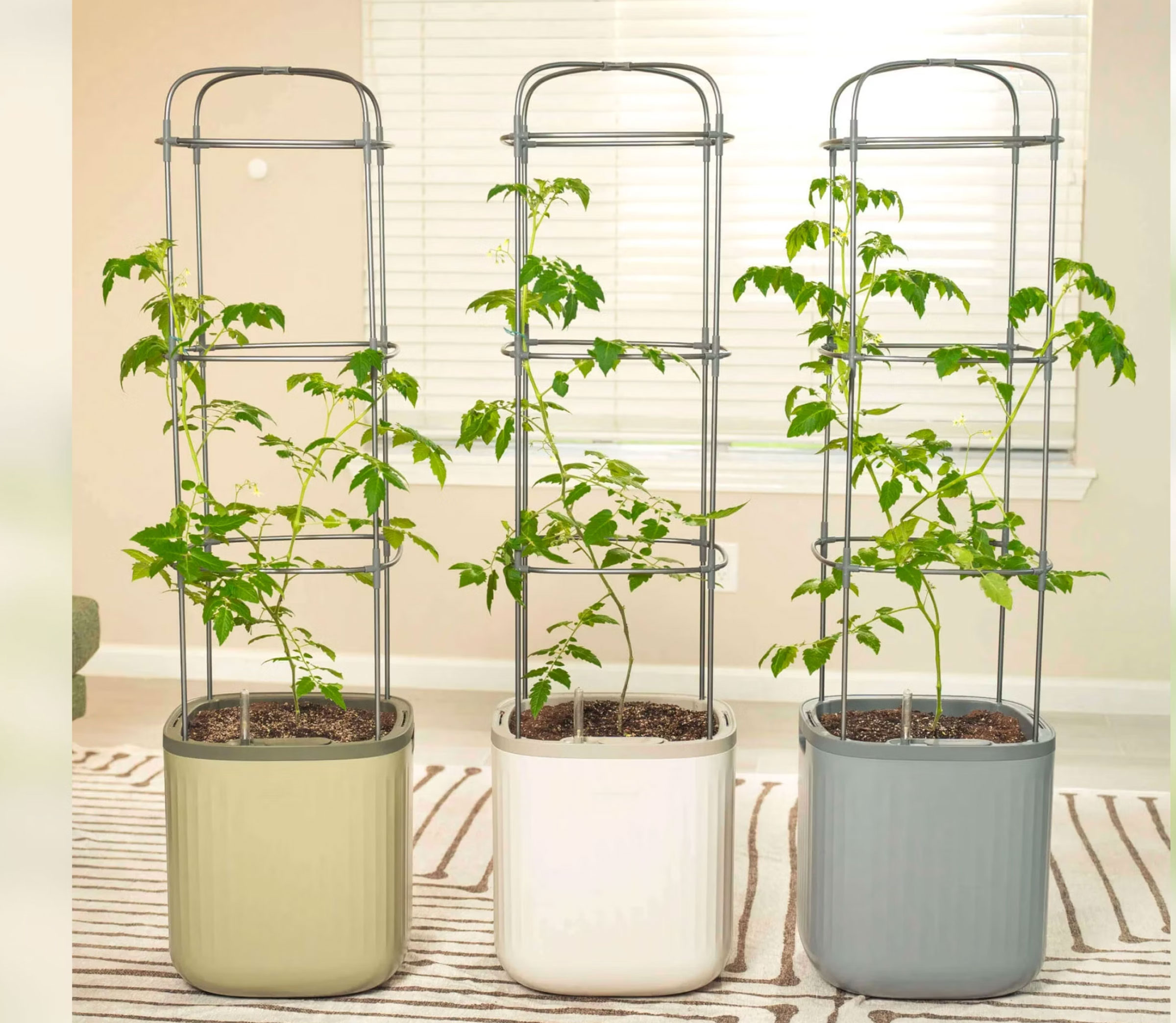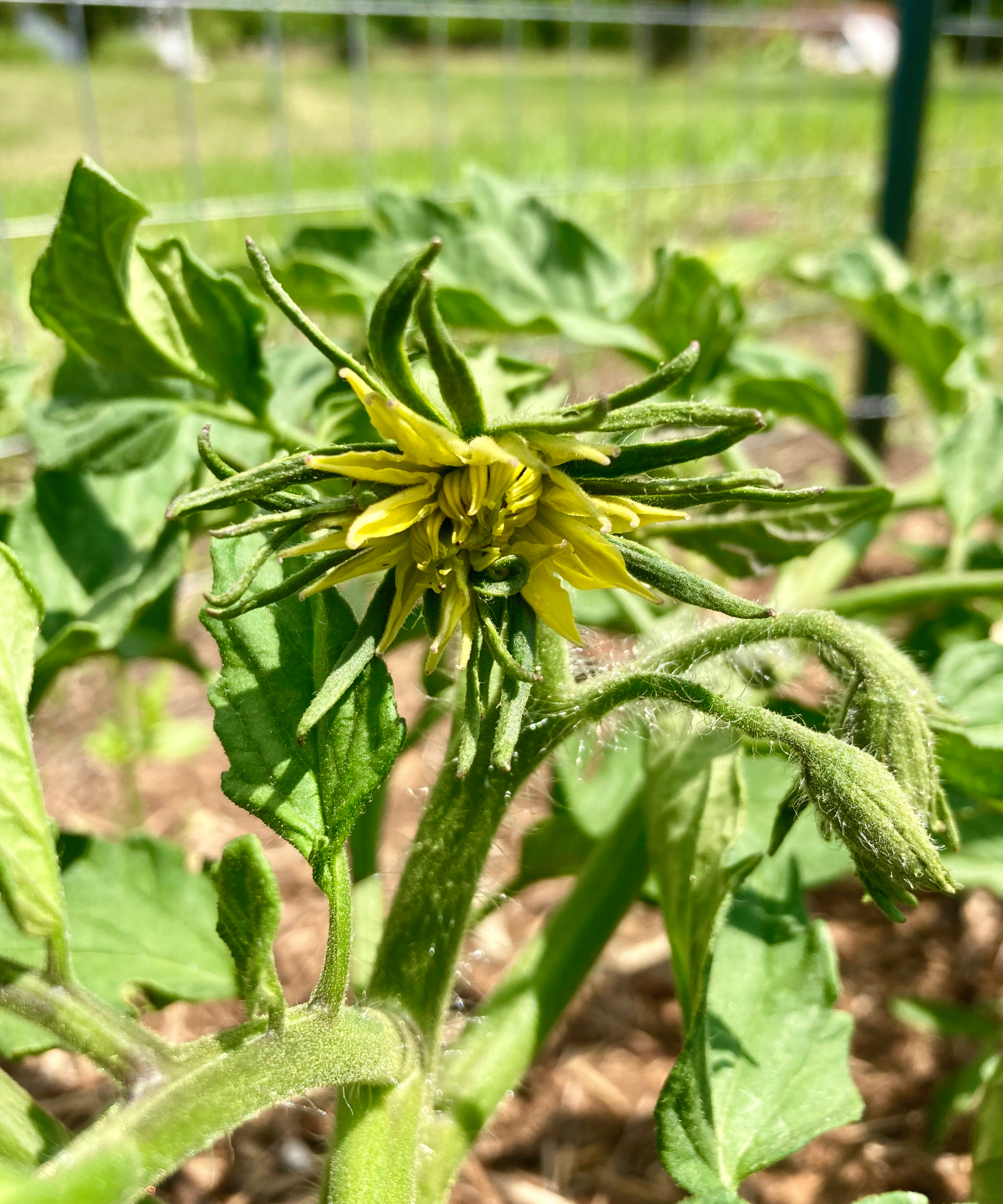Do Your Tomato Flowers Look Weird? They Could Be Tomato Megablooms – What That Means For Plants
Tomato megablooms can startle gardeners, but these weird-looking flowers are nothing to worry about. Learn why they occur and what to do if you find one.

If you’ve been growing tomatoes for a while, you’ve likely seen a variety of deformities occur on your plants. But have you ever seen a tomato megabloom? Sometimes deformities are due to stress, sometimes they’re caused by environmental conditions, and sometimes disease is the root of the problem.
Tomato megablooms are fasciated or fused tomato blossoms and there are several reasons why this odd-looking growth happens. Keep reading to learn more about what a tomato megabloom is and what this common tomato problem means for your plants.

The EZ Self-Watering Tomato Planter with Trellis from Vego Garden makes growing tomatoes easier than ever! Get one today in the Gardening Know How Shop.
What Is a Tomato Megabloom?
A tomato megabloom occurs when one tomato flower fuses to another at the ovary. More often than not this involves two ovaries, but tomato megablooms can be made of up to six flowers fused together.
You can usually spot a tomato megabloom well before the bloom becomes a fruit. To identify one, look for a flower that has extra petals and looks somewhat like a dandelion. Normally when growing tomatoes, flowers have five to seven petals and one pistil. Tomato megablooms can have one or more pistils.
Flower fasciation occurs in over 100 different plant species. This random mutation is not generally harmful although it can affect stems, roots, fruit, and blooms.
What Causes Tomato Megablooms?
A tomato megabloom may occur for a number of reasons. Bacteria, environmental stress, fungal disease, herbicide damage, genetics, or viral disease can all cause fasciated tomato blossoms. Though some common tomato diseases can cause megablooms, there are less problematic reasons why it occurs as well.

One 1998 study showed that tomatoes grown in low temperatures are more susceptible to genetic malformations in the flowers. That’s why the first fruits of the tomato plant often experience this abnormality. As the weather warms, future blooms typically develop normally.
Sign up for the Gardening Know How newsletter today and receive a free copy of our e-book "How to Grow Delicious Tomatoes".
What To Do About Tomato Megablooms
If you find one of these weird-looking tomato flowers in your garden, don’t worry! Megablooms are not harmful and the fruit produced by them is safe to eat.
The only real issue is that these mammoth fruits require extensive energy to come to fruition—much like how a mother of triplets needs additional energy to nourish multiple babies.
There are some ways to prevent fused tomato blossoms, however. Since cool temperatures foster this condition, take care to grow tomatoes only when all danger of frost has passed. The best temperatures for growing tomatoes are between 65 to 70 F (18 to 21 C) during the day and 55 F (13 C) or above at night.
Some experts suggest heirloom tomatoes and smaller tomato varieties are less likely to show this trait. So if you’re worried about fused tomato blossoms, forego the large hybrids and grow cherry tomatoes instead. The Supersweet 100 hybrid tomato is one of our gardening experts' favorites for an irresistibly sweet harvest.

Also, keep your tomato plants adequately watered, fertilized, staked, spaced, and free from pests, diseases, and weeds. Healthy stress-free plants are less likely to foster this genetic malformation.
Lastly, if you find a double, triple, or even bigger tomato megabloom on your tomato plant, you can always pinch it off to stop it from producing a massive or malformed fruit. This will increase your tomato yields by diverting energy away from forming one giant tomato and instead towards forming multiple regular-shaped fruits instead.
Ultimately though, tomato megablooms are a fun little mishap of nature. If you find some forming on your tomato plants, leave one or two and see what happens. They often turn into weird-looking tomatoes that are silly shapes or that are immensely large. Have some fun in your garden and let those megablooms grow!
This article features products available from third party vendors on the Gardening Know How Shop. Keep in mind that our plant inventory is limited—so if you’re thinking of purchasing, don’t wait!

Amy Grant has been gardening for 30 years and writing for 15. A professional chef and caterer, Amy's area of expertise is culinary gardening.
